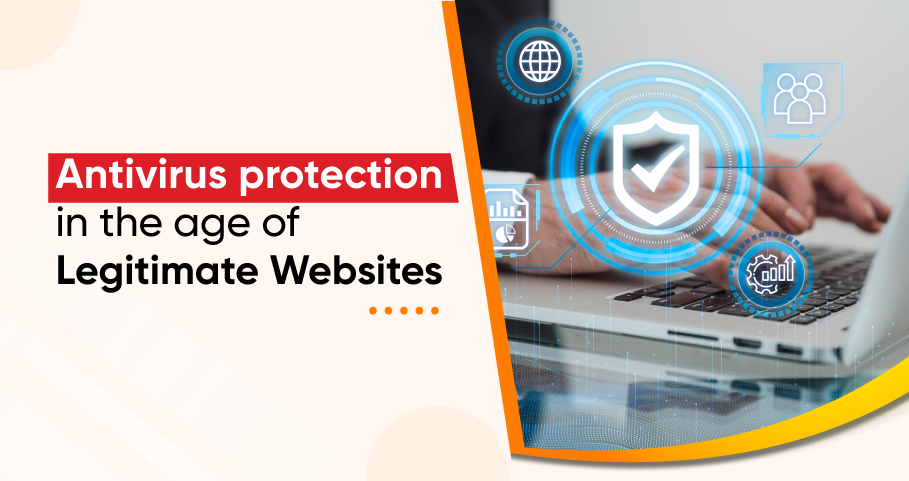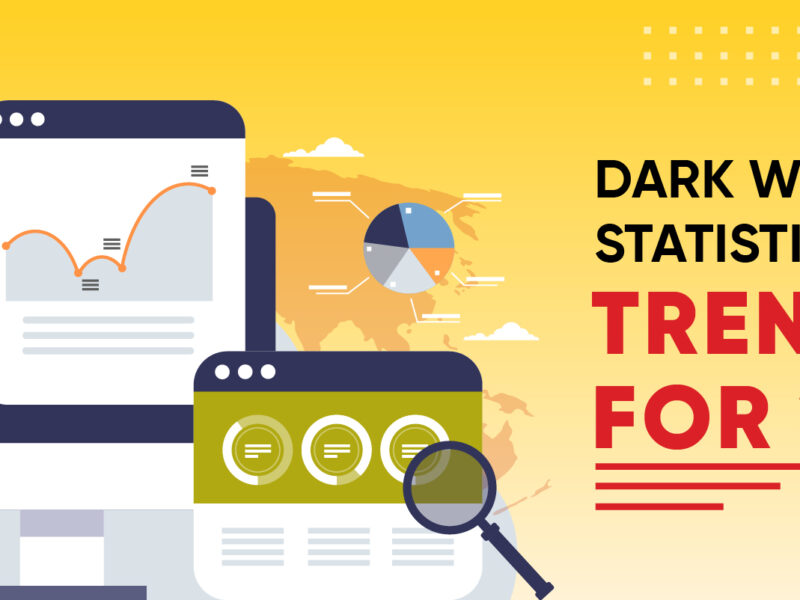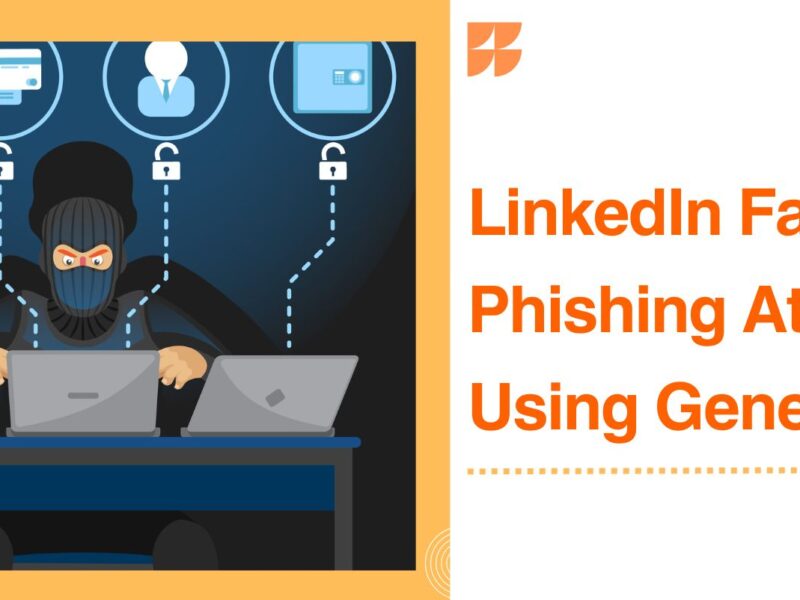
Unmasking Legitimate Websites in the Age of Antivirus Protection
In India, around 30 crore people are exposed to phishing attempts, with 5 lakh possibly falling victim to scammers – ET
In today’s digital age, the internet is both a treasure trove of information and a breeding ground for cyber threats. As we dive into the virtual realm, the line between authentic and malicious websites can become increasingly blurred. Just because a link appears in the search results of your preferred search engine doesn’t necessarily mean it’s a legitimate destination. This is where the critical role of antivirus software comes into play.
In the vast realm of the internet, not all websites have your best interests at heart. Scamed websites are often designed to deceive and defraud users, and are lurking among the legitimate ones. Let’s dive into what these deceitful sites are, how they work, and how you can safeguard yourself.
The Problem: Navigating the Web of Deception
The vast expanse of the internet is teeming with websites of all kinds, and among them, rogue entities lurk. These malicious websites are often designed to deceive users into providing personal information, spreading malware, or falling victim to various cybercrimes. With the sheer abundance of online resources, it’s becoming increasingly challenging to discern the legitimate from the fraudulent, leaving users vulnerable to cyber threats.
57% of all frauds in India occur online, and 26% of Indian organizations lose more than $1 million to similar schemes, according to – The Print.
Scam Websites Unveiled
Scam websites are virtual traps set up to trick users into fraudulent activities or malicious schemes. Exploiting the internet’s anonymity, scammers disguise their true intentions behind seemingly genuine appearances. These sites can use false security alerts, enticing giveaways, and other deceptive tactics to appear legitimate.
With millions of legitimate websites offering valuable information and services, it’s essential to recognize the signs of scams.
Scam sites are built for a range of malicious purposes, from identity theft to credit card fraud.
Scam Websites and Mechanisms
Scam websites function in various ways, all with the goal of extracting your personal or financial information. These sites may pop up as standalone pages, unauthorized overlays on legitimate sites, or even through pop-ups. Their tactics are cunning and designed to attract and misguide users.
Scammers typically follow these steps:
- Lure: Users are lured to the scam site through various channels.
- Settlement: Users take an action that exposes their data or devices to the attacker.
- Accomplish: Attackers misuse the obtained information for personal gain or infect users’ devices with malware.
Taking Advantage of Human Psychology
Scam websites heavily rely on social engineering—exploiting human judgment instead of technical systems. These scams rely on victims believing that the site is genuine and trustworthy. Emotional manipulation is a key tactic, as scammers trigger urgency, excitement, or fear to bypass skepticism.
Types of Scams on Websites
Scam websites take on different forms while sharing similar mechanics. Recognizing these types can help you spot potential threats:
- Phishing scams: These sites mimic legitimate institutions like banks to steal your private information.
- Online Shopping Scams: Fake online stores collect credit card details, often delivering subpar products.
- Scareware Scams: Fake security alerts prompt you to download malware disguised as antivirus
- Sweepstakes Scams: These scams offer incentives in return for financial information.
Identifying and Avoiding Scam Websites
Detecting scam websites requires vigilance. Look out for emotional language, poor design quality, odd grammar, and the absence of basic web pages. Verify domain names, avoid suspiciously good deals, and do an internet search for reviews. Use total security connections, and always type URLs manually or use bookmarks. If you fall victim, take immediate action to limit the damage.
Check for misspelled URLs – A misspelled URL is a crucial signal of a phony site.
Check for site seals – Seals that do nothing when clicked should not be trusted, as they are most likely forgeries.
Look for a padlock – A padlock on a website indicates that it is protected by a TLS/SSL certificate, which encrypts user data. Look for the lock in the upper left corner of the address bar.
Run a website checker – When in doubt, utilize a website checker to see if a website is safe.
Additional techniques for evaluating a website
Look for the following trust indications on a site in addition to a lock, site seal, and running the URL through a website checker:
- A privacy statement
- A return policy is
- Contact information for the company, such as a phone number and an address
- The grammar and spelling are correct.
- Online reviews (to find online comments, simply Google “reviews for [site name]”).
- In general, avoid any bargains that appear to be too good to be true, since they most usually are fakes.
What to do if you discover a bogus website
If you visit a bogus website, do not submit any personal information such as bank information, a login and password, verification codes, a Facebook login, or even your name and contact information. When in doubt, leave it blank. Furthermore, do not click on links in strange emails, internet posts, or direct messages. Knowing whether or not a site is fraudulent will help you decide whether or not to buy from it.
You should immediately report a bogus site to Google Safe Browsing and exit it. As an online user, you can also choose antivirus software to protect yourself from all kinds of scams and phishing attacks.
The Solution: The Power of Antivirus Protection
Enter the safe and secure world of antivirus – the digital guardian that shields users from the myriad of cyber threats lurking online. Antivirus solutions have evolved beyond mere virus detection; they now encompass a holistic approach to cybersecurity. These software packages are designed to identify and neutralize a wide range of online threats, including phishing scams, malware, spyware, and more.
Protegent: The Epitome of Antivirus Excellence
Among the sea of antivirus options, Protegent emerges as a standout, offering an all-encompassing solution that not only defends against threats but also empowers users to navigate the digital landscape with confidence. It is World’s only Antivirus with Data Recovery Software with over 17 million satisfied customers.
Real-time Threat Detection: Protegent employs cutting-edge technology to identify and intercept threats in real time, providing a proactive shield against the latest cyber threats.
Comprehensive Malware Protection: The robust malware detection and removal capabilities of Protegent Antivirus Software ensure that your system remains clean and secure from the hidden dangers of the web.
Phishing Defense: With phishing attacks on the rise, the software’s advanced features thwart fraudulent websites and phishing attempts, safeguarding your sensitive data.
Safe Browsing: Protegent acts as your online sentinel, ensuring that the websites you visit are safe, legitimate, and devoid of hidden threats.
Regular Updates: In the ever-evolving landscape of cyber threats, this antivirus software stays ahead with regular updates that bolster its defenses against emerging dangers.
In an era where a simple click can lead you down a treacherous path, the importance of robust antivirus software cannot be overstated. Protegent stands as a sentinel, fortifying your online experiences and ensuring that you can explore the digital world without fear.
As you venture further into the depths of the internet, armed with Protegent’s comprehensive protection, you can confidently face the challenges of the digital jungle. Remember, just because a link appears in your search results doesn’t mean it’s trustworthy – but with Protegent by your side, you’re equipped to make informed choices and surf the web securely.
Conclusion: Stay Protected
While the digital world is full of both opportunities and risks, understanding how scam websites operate empowers you to navigate the online landscape more safely. By being cautious, skeptical, and proactive, you can avoid falling into the traps set by these fraudulent sites. Your online security is in your hands. Take the necessary steps to protect yourself and ensure a safe online experience.
Take charge of your digital safety today – buy now and explore the boundless virtual realm with the unwavering shield of Protegent Antivirus Software.




